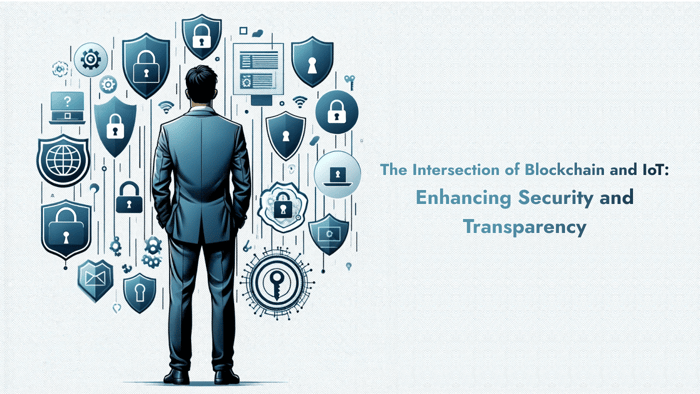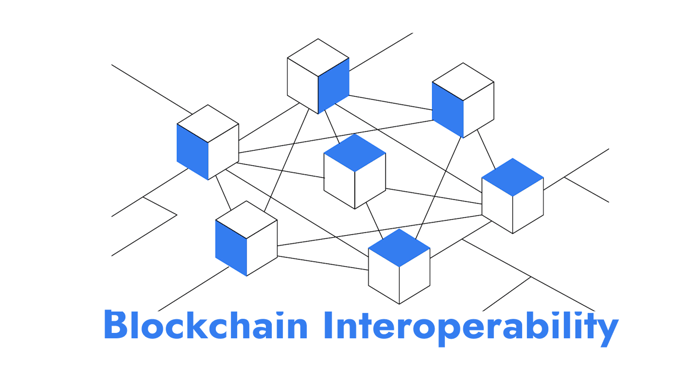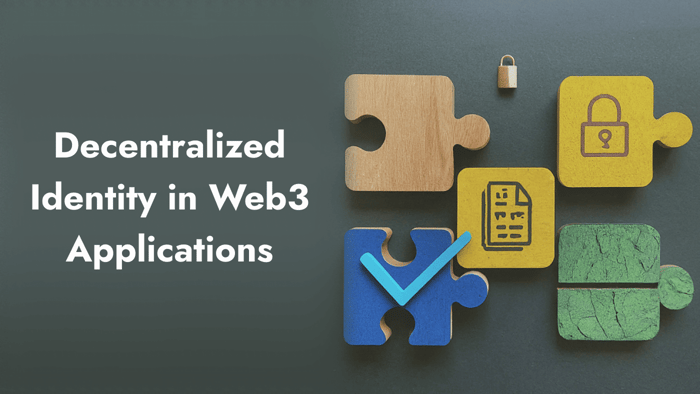Learn about the role Blockchain plays in IoT and its impact on security and transparency.
The intersection of Blockchain and IoT is an exciting and compelling development with the potential to transform the security and transparency of interconnected devices. However, before we delve into the intricacies of this convergence, it is essential to have a deeper understanding of the fundamental concepts of Blockchain and IoT.
In simple terms, Blockchain is a decentralized, immutable ledger that records transactions across a network of computers. It is a distributed database that securely stores data in blocks that are linked together using cryptography. Each block contains a unique code and a timestamp that ensures that the data contained within it is immutable and tamper-proof.
On the other hand, the Internet of Things (IoT) refers to the vast network of interconnected devices that communicate and share data. IoT devices can be anything from smart home appliances to industrial machinery, and they are all connected to the internet. These devices can collect and transmit vast amounts of data, making them crucial for various industries, including healthcare, retail, and manufacturing.
The widespread adoption of IoT devices has highlighted the critical need for robust security measures and transparent data exchange. With IoT devices becoming more prevalent in our daily lives, ensuring the confidentiality and integrity of the exchanged information has become more critical than ever.
This article aims to demystify the immense potential of integrating Blockchain into IoT ecosystems to address these pressing concerns. By leveraging the unique features of Blockchain, such as its immutability, decentralization, and transparency, we can create a secure and trustworthy environment for IoT devices to operate in.
By the end of this discussion, readers will have a clear understanding of how this integration can bolster security and transparency in IoT environments, laying the groundwork for a more secure and trustworthy interconnected future.
Blockchain in IoT Security
Blockchain and IoT are two revolutionary technologies that have emerged in recent years. The proliferation of IoT devices has underscored the critical need for robust security and transparent data exchange.
Let's see how Blockchain, with its decentralized consensus mechanisms and advanced cryptographic techniques, is revolutionizing IoT security.
Decentralized Consensus Mechanisms
At the heart of Blockchain's influence on IoT security lies its decentralized consensus mechanisms. In contrast to traditional centralized systems susceptible to a single point of failure, Blockchain operates on a distributed ledger. Every transaction or data exchange is meticulously recorded across a network of nodes, and consensus is achieved through mechanisms like Proof of Work (PoW) or Proof of Stake (PoS). This decentralization significantly bolsters security by making it exceptionally challenging for malicious actors to compromise the entire network.
Cryptographic Techniques
Blockchain's impact is further solidified through advanced cryptographic techniques. Serving as an impervious barrier against unauthorized access and data tampering, these techniques utilize cryptographic hashes, private keys, and public keys. Even in the event of a compromised node, the cryptographic nature of Blockchain ensures the overall security and confidentiality of data within the IoT ecosystem.
To truly appreciate the tangible benefits of Blockchain in securing IoT, let's turn our attention to real-world applications. In supply chain management, Blockchain is a game-changer, meticulously tracing the journey of products from manufacturing to delivery. Each step is indelibly recorded on an immutable ledger, providing unparalleled transparency and security against fraudulent activities. In healthcare, patient data stored on Blockchain guarantees privacy and integrity, staunchly preventing unauthorized access.
A prime example is the collaboration between IBM and Walmart, where Blockchain is harnessed to elevate the traceability of food products. Through a decentralized ledger, every facet of the supply chain is meticulously recorded, facilitating swift identification of sources in the face of contamination or quality issues. This not only safeguards consumers but also exemplifies Blockchain's potential to revolutionize security in intricate IoT ecosystems.
Smart Contracts in IoT
As we learn more about the interoperability of Blockchain and the Internet of Things (IoT), the importance of smart contracts becomes apparent. Smart contracts act as a cornerstone, leading the way in revolutionizing how transactions are automated and secured within IoT ecosystems.
These contracts are essentially self-executing agreements that come with coded terms, which are automatically enforced and executed when specific conditions are met.
In the IoT-Blockchain system model, smart contracts play a pivotal role in orchestrating communication with gateways/access control, managing device permissions, and enforcing predefined security rules. The beauty of smart contracts lies in their ability to independently verify and execute transactions, thereby eliminating the need for intermediaries and fostering a trustless environment. By doing so, smart contracts bring about a paradigm shift in the way we conduct transactions within IoT ecosystems.
In an integrated system model of the Internet of Things (IoT) and Blockchain technology as depicted by the illustration above, gateways and access control play a crucial role in connecting the physical world of IoT devices to the secure realm of Blockchain. The gateways facilitate seamless communication between the devices and the Blockchain to validate incoming data, execute transactions, and enforce access control measures based on predefined conditions.
The smart contracts, residing on the Blockchain, enable the gateways to interact with the devices and define the permissions for each device. These permissions are coded into the smart contracts and dictate the actions each device can perform. For example, a sensor may have permission to write data to the Blockchain, while other devices may only have read access. These permissions are not only automated but also embedded securely in the Blockchain, ensuring a transparent and tamper-resistant framework.
In addition to the device permissions, smart contracts also have security rules that specify the conditions under which transactions are considered valid. These rules ensure that only authorized devices can initiate certain actions and that data can only be updated at specific intervals, among other things. The smart contracts act as the guardians of the IoT blockchain nexus, ensuring that every transaction adheres to the predefined security parameters.
Transparent Data Transactions
The integration of Blockchain and the Internet of Things (IoT) has led to the emergence of transparent data transactions, which ensures visibility and tamper-proof integrity in the exchange of information. Blockchain's decentralized ledger model replaces traditional centralized databases and ensures transparent and tamper-proof data transactions in the IoT realm. In this decentralized paradigm, data transactions are distributed across a network of nodes, serving as an immutable record, preventing unauthorized alterations, and establishing an unassailable chain of custody for every piece of data.
The decentralized ledger plays a crucial role in maintaining data integrity. Each transaction is cryptographically linked to the previous one, creating a chain of blocks that is resistant to manipulation. Once a block is added to the chain, altering any preceding blocks requires the consensus of the majority of the network, making tampering not only difficult but practically impossible without detection.
One significant advantage of Blockchain in ensuring transparent data transactions in IoT is its ability to provide a single source of truth. In IoT environments, data can be manipulated or lost due to various factors, such as device malfunction or cyberattacks. Blockchain's immutable nature provides a reliable source of information that cannot be disputed, fostering trust in the data exchanged between IoT devices.
The supply chain industry has seen significant success in implementing Blockchain technology to ensure transparent data transactions. By recording every movement of a product, from manufacturing to delivery, on an immutable Blockchain ledger, each stakeholder in the supply chain, including manufacturers, distributors, and retailers, has real-time access to this ledger. Blockchain has enabled companies to gain real-time visibility into the provenance of their products, enhancing trust and transparency for consumers and businesses alike.
This transparent data transaction model not only mitigates the risks of fraud and counterfeiting but also enhances overall supply chain efficiency. Stakeholders can make informed decisions based on real-time trustworthy data, fostering a collaborative and secure environment.
Challenges and Considerations
The integration of Blockchain with IoT, despite its potential benefits, also presents several challenges and considerations that need to be addressed to ensure seamless integration and optimal functionality.
Some of the key challenges are:
- Scalability: One of the primary challenges lies in the scalability of both Blockchain and IoT networks. As the number of connected devices grows exponentially, traditional Blockchain frameworks may struggle to handle the increasing transaction volume and maintain responsiveness. Striking a balance between decentralization and scalability becomes imperative.
- Interoperability: The diversity of IoT devices, each with its unique specifications and communication protocols, poses a significant interoperability challenge. Ensuring that disparate devices can effectively communicate and participate in a unified Blockchain network demands standardized protocols and robust compatibility measures.
- Resource Constraints: Many IoT devices operate with limited computational power and storage capacity. Integrating Blockchain requires addressing resource constraints without compromising the security and efficiency of the overall system.
To overcome these challenges, ongoing research and industry efforts are focusing on developing new technologies and standards to improve the integration of Blockchain and IoT, for instance:
- Tailored Consensus Mechanisms: Choosing the right consensus mechanism is critical. Traditional proof-of-work (PoW) mechanisms, while secure, may not be energy-efficient for resource-constrained IoT devices. Alternatives like proof-of-stake (PoS) or lightweight consensus algorithms such as Directed Acyclic Graphs (DAGs) must be explored based on the specific requirements of the IoT ecosystem. Consortiums and alliances are actively working on defining industry standards, ensuring that different IoT devices can seamlessly communicate on Blockchain networks.
- Data Privacy and Security: Ensuring the privacy and security of sensitive IoT data is paramount. Implementing robust encryption methods and access controls within the Blockchain network safeguards against unauthorized access and data breaches.
- Standardized Protocols: Establishing standardized protocols for communication between IoT devices and Blockchain networks enhances interoperability. Industry-wide collaboration on common standards facilitates a more cohesive and efficient integration process.
- Edge computing: Edge computing is emerging as a complementary solution, reducing the burden on centralized Blockchain networks by processing certain transactions locally on IoT devices.
Regulatory Implications
The integration of Blockchain and IoT has significant regulatory implications that require careful consideration for successful implementation. The regulatory landscape for Blockchain and IoT integration is dynamic and evolving, and it involves addressing various privacy concerns and compliance issues.
One primary concern is data privacy, especially considering that IoT devices generate vast amounts of potentially sensitive and personal data. The integration of Blockchain with IoT can potentially enhance data privacy by establishing a secure and transparent framework for data exchange. However, it also introduces questions about data ownership, control, and consent. Regulatory frameworks must address these concerns to strike a balance that protects data privacy while fostering innovation and industry growth.
Compliance with existing regulations, such as data protection laws and cybersecurity measures, is another critical consideration. The integration of Blockchain and IoT introduces new challenges, such as navigating compliance across multiple regulatory frameworks in different jurisdictions. Regulatory bodies need to provide clear guidelines on compliance requirements to enable businesses to operate within the legal framework effectively.
To address these concerns, regulatory frameworks are under development to offer guidance on the integration of Blockchain and IoT. For example, the European Union's General Data Protection Regulation (GDPR) provides a comprehensive framework for data protection and privacy within the EU. Similarly, the US Federal Trade Commission (FTC) has issued guidelines on IoT security and privacy, emphasizing the importance of transparency and consent in data collection and usage.
Conclusion
In conclusion, the integration of Blockchain and IoT presents an intriguing opportunity to improve the security and transparency of interconnected devices. Blockchain technology has the potential to enhance transparency, security, and efficiency in various sectors, including supply chain management, smart homes and buildings, smart cities, healthcare, agriculture, and energy. The blockchain network can utilize decentralized consensus mechanisms and cryptographic techniques to enforce a set of rules on the IoT devices, thereby enhancing network security. While there are challenges to overcome, ongoing research and industry efforts are actively working to ensure a robust and reliable framework for the future of IoT and Blockchain integration. The transformative impact of Blockchain on IoT security and transparency is significant, paving the way for a more secure and trustworthy interconnected future.
Akava would love to help your organization adapt, evolve and innovate your modernization initiatives. If you’re looking to discuss, strategize or implement any of these processes, reach out to [email protected] and reference this post.





